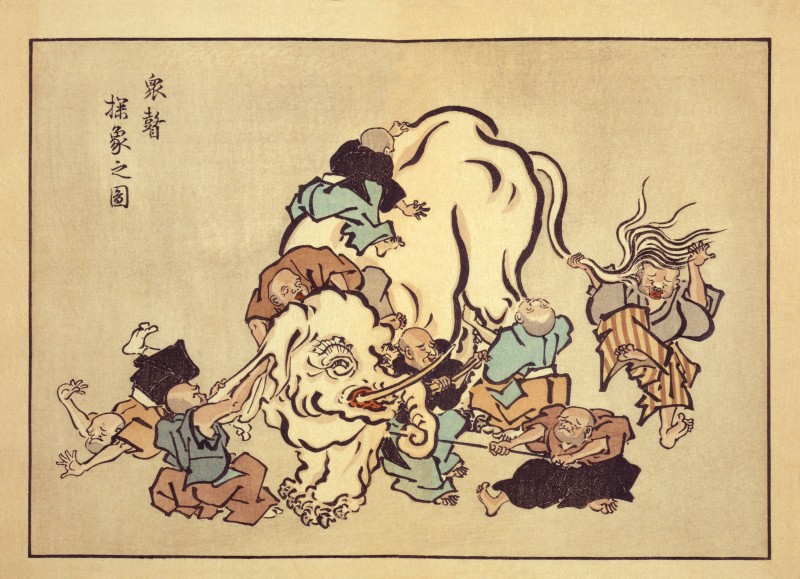The illustration above comes from Wikipedia, which has a complete entry on the Asian proverb about blind monks who examine an elephant and generate multiple hypotheses of what it could be. In product design speak, these monks are doing collaborative problem solving with a shared goal of identifying a mysterious object—the elephant.
The monks, the story goes, all come from different backgrounds: an old tailor touching an elephant’s ear describes it as cloth; an aging gardner hugging the leg imagines a tree trunk; an elephant’s tusk is envisioned as a weapon by an arms master. Each monk brings his own life’s worth of experience to bear on the problem, but each has very limited access to the whole.
It’s easy to see how this story can be used to explain the pains of collaborative and cooperative group projects in which individuals focus on product design. Each person brings their own expertise to the table, hopefully contributing positively to the whole process.
But this story is also a good metaphor for understanding problem solving in context of our very limited working memory capacity. Unlike elementary school math problems that we all calculated, real world problems are messy and don’t come with a set of problem solving methodologies and solutions that can be counted on to work out in nice whole numbers (if you got a nasty fraction during a long division problem, you probably screwed it up).
Real world problems tend to have many variables, the significance of which we might have difficulty ascertaining at the start. The solutions and even a problem solving approach tend not to be obvious. And on top of it all, in real world problems, the extent of the problem is not obvious (just consider the Gulf of Mexico oil spill—as of May 29, 2010, we still don’t know the extent of the problem or its ramifications).
Because of the complexity of real world problems, we are only able to focus on one aspect of the problem at a time—that’s all our working memory will allow. Like a blind monk, we feel around trying to understand what we are dealing with by touching upon just a small sliver of the problem. And during each such preview, we bring to bear our expertise and background knowledge as it relates to that small part of the problem that we are in contact with. From each perspective, the problem looks different and our problem solving approaches change. It is very difficult to comprehend the totality of the problem and thus apply the right problem solving approach to reach a solution.
So product design, viewed through the lens of problem solving, is limited by the limitations of our working memory.

